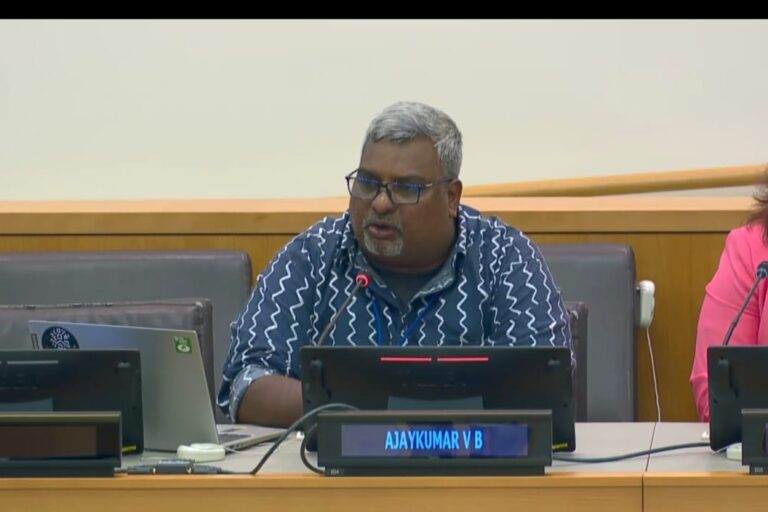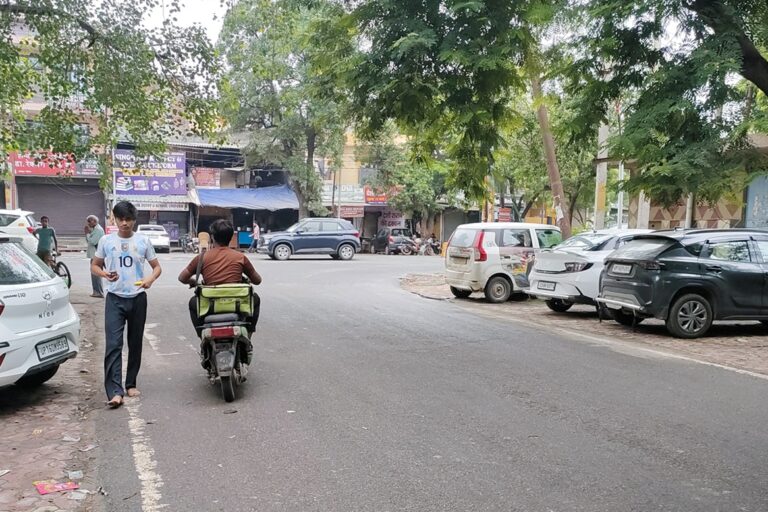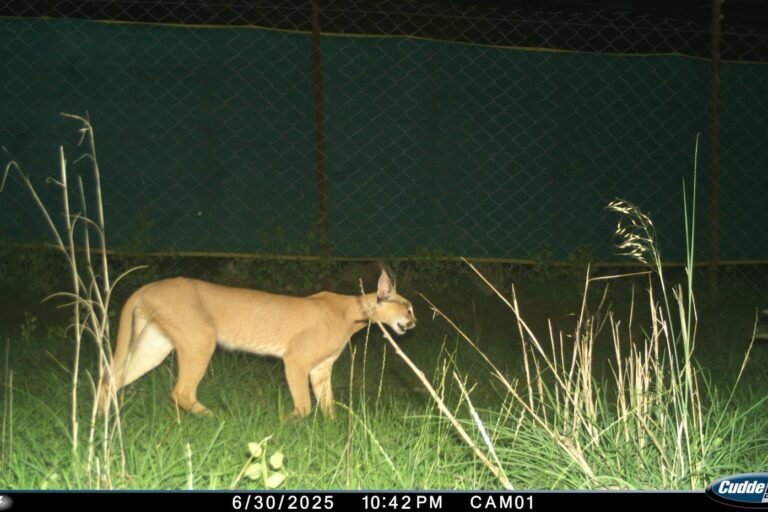- Organic farming activists have unearthed cultivation of genetically modified (GM) brinjal in Haryana.
- As illegal seed varieties continue to enter Indian farms and markets, the functioning of the apex regulatory agency for genetically modified crops is under scrutiny.
- The regulatory oversight poses a threat of irreversible contamination of India’s brinjal germplasm, say environmentalists.
India’s seed market hides a sea of illegality, which keeps rearing its ugly head every once in a while. The discovery of genetically modified (GM) brinjal in a Haryana farmer’s field is the latest in the list of illegal seeds that have cropped up in India since 2001. That year, it was illegal Bt cotton (a genetically-modified, pest-resistant plant cotton variety); in 2009 it was illegal herbicide-tolerant (H) cotton; a few years later, it was a newer version of Bollgard cotton, or BG 3 as its locally called, and in 2017, a herbicide-tolerant (HT) soybean. All this without official approval from the regulator and enforcer of the law for genetically-engineered crops in India, the Genetic Engineering Appraisal Committee (GEAC).
This situation puts the role of the GEAC (formerly Genetic Engineering Approval Committee) squarely under the scanner. An apex regulatory body, with powers to take punitive action when needed, under the Environment Protection Act (EPA), the GEAC seems to have turned a blind eye to these developments.
The GEAC, constituted in 1990 under the Union Ministry of Environment and Forests and Climate Change (MoEFCC), is responsible for the appraisal of activities involving large-scale use of hazardous microorganisms and recombinants in research and industrial production from the environmental angle. The committee is also responsible for the appraisal of proposals relating to the release of genetically-engineered (GE) organisms and products into the environment, including experimental field trials.
The GEAC is supposed to meet on the second Wednesday of every month to consider various application and policy issues. So far, as per its website, this has been achieved only once in 2005, where a meeting every month was held as scheduled. The website lists only one meeting held in the past five months of 2019.
The committee, however, did bare its teeth in its initial years.
In 2001, Navbharat Seeds, Ahmedabad, started marketing a genetically-modified variety of cotton seed, Navbharat 151, without GEAC approval. When the environment ministry learned of the cultivation of this illegal seed, it sent a notice to the company seeking an explanation. The ministry also tested a packet of the seeds at the Delhi University south campus for the presence of the Cry1A(c) gene. The results were positive for genetic-engineering.
The ministry then sent C.D. Mayee, director of the Central Institute for Cotton Research (CICR), Nagpur, and T.V. Ramaiah, from the government’s Department of Biotechnology, for an investigation to fields near Ahmedabad. Tests conclusively proved that Navbharat 151 was transgenic cotton. The GEAC asked the managing director of Navbharat Seeds to appear before it.
Finally, the GEAC directed the Gujarat State Biotechnology Coordination Committee to uproot the standing crop of Navbharat 151 Hybrid Cotton and destroy it by burning (which also didn’t happen), among other actions. That was in October 2001. Ironically, by March 2002, the GEAC approved the commercial release of Bt cotton.

Although little came of it, the GEAC’s reaction in 2001 was laudable compared to its later performance. Since then, the committee’s functioning has been riddled with allegations, by environmental activists, of conflict of interest, lack of transparency and brazen inaction.
In 2009, environmentalist Aruna Rodrigues, the petitioner in the public interest litigation against genetically modified crops that was filed in the Supreme Court in 2005, complained to the GEAC about the sale of herbicide tolerant (HT) cotton under the brand name Weedgard. Agrochemical company Monsanto also complained to the authority about the sale of these illegal seeds, noting that the technology of HT cotton that it developed had not been approved for release in India.
The issue was debated by the GEAC which, according to the minutes of the meeting on in July 2009, expressed “deep concern regarding the illegal sale and cultivation of HT cotton seeds in Gujarat, Madhya Pradesh and Andhra Pradesh and opined that matters of such serious nature needs to be investigated at the highest level and criminal proceedings should be initiated against the culprits. The Committee requested the Chairman, GEAC, to take up the matter with the chief secretaries of the respective state governments”, but that didn’t translate into action on the ground. There is also a pending application in the Supreme Court with regard to illegal HT soy and the import of viable genetically engineered seeds of several crops.
The curious case of Bt brinjal
There has been an indefinite moratorium since 2010, for commercial cultivation of Bt brinjal in India, imposed by the then-environment minister Jairam Ramesh. However, according to a legal notice sent by lawyer Prashant Bhushan to the Union Minister for Environment Harsh Vardhan on April 23 this year, Rajinder Chaudhary of Kudrati Kheti Abhiyan (KKA), a group that encourages organic farming in Haryana, reported to the GEAC that a farmer in Fatehabad, Haryana, had been growing Bt brinjal. A sample tested by the lateral flow strip method, showed positive results for the Bt Cry1A(c) gene. A scanned copy of the report was also sent to the GEAC, which received it on April 25, the notice said.
Meanwhile, the Haryana government sent test samples to the National Bureau of Plant Genetic Resources (NBPGR) which didn’t detect the Cry1A(c) gene. Kuldip Singh, director, NBPGR, told Mongabay-India that the NBPGR was asked to test samples only for the Cry1Ac event and it was negative. However, there are other marker genes that indicate that the sample is a genetically modified organism. A report has been sent to the Haryana government. Some more tests are needed to identify the marker genes, he added. An official in the Haryana government said a committee was discussing the course of action and further investigation of the marker genes.
The GEAC seems to be nowhere in the picture in this case, so far.

After filing the complaint about illegal Bt brinjal cultivation, the activists received an email from Richa Sharma, joint secretary, MoEFCC, in-charge of biosafety, saying that the ministry had written to the chief secretary Haryana, who is the chairman of the State Biotechnology Coordination Committee, to look into the matter and take necessary action after verifying facts on ground and stop the illegal cultivation of Bt brinjal.
It must also be pointed out that, back in 2008, the GEAC had cleared Bt brinjal for commercial cultivation despite the contentions of several scientists.
The then environment minister, Jairam Ramesh, initiated a scientific review and a series of public hearings, following which he called for a moratorium on its cultivation in February 2010. The GEAC had clarified in its meeting of February 2010 that “the present decision imposing a moratorium is only for Bt brinjal Event EE-I.” After the moratorium was issued, the GEAC was to ascertain that Mahyco, the company that developed the Bt brinjal seeds, and institutions researching seeds like the Tamil Nadu Agricultural University (TNAU) , Coimbatore and University of Agricultural Sciences (UAS) Dharwad deposit all the seed stock available with them at the NBPGR storage facility.
The NBPGR director Singh confirmed to Mongabay-India that Mahyco or anyone else did not deposit the seeds with the NBPGR.
Lack of scrutiny poses threat to India’s biosecurity
In the face of regulatory inaction, civil society has taken the initiative to test the samples of brinjal from Haryana and is unreservedly critical of the GEAC. Rodrigues said Bt brinjal planting was an egregious violation of the indefinite moratorium and claimed that the GEAC turns a blind eye because of conflict of interest. It is also the most serious breach of India’s biosafety, brinjal biodiversity and therefore, biosecurity.
“India has the greatest brinjal germplasm in the world with 2,500 varieties including wild species, which is now under threat of irreversible contamination because of cumulative acts over time of senseless and criminally irresponsible regulatory oversight,” she added.
Kavitha Kuruganti, co-convenor, Coalition for a GM-Free India, an informal network opposing release of genetically-modified organisms in the country, told Mongabay-India: “It is not clear whether GEAC has any control on the ground of what is happening in various trials it has approved, and with seed production that happens in the garb of some trials. The mystery of this GM brinjal in Haryana – which tested positive for a Cry1Ac /1Ab lateral flow strip test we conducted initially, which is now found to not contain any Cry1Ac gene when tested by the NBPGR – only deepens. What is clear is that unapproved and illegal GMOs are just appearing in farmers’ fields and the produce entering the food chain. What will be the decisive and deterrent action from GEAC is not clear despite so many days after our complaint.”
The GEAC has also allowed imports of GM soya bean oil from time to time. Among those who voiced concern about this was the late Pushp Bhargav, who the Supreme Court appointed as nominee on the GEAC. It was Bhargav who raised questions on the tests that cleared Bt brinjal and told the Parliamentary Standing Committee on GM Crops in 2012, of the immense pressure the scientists were under, to approve the seed.
In the last few years, BG 3, which is supposed to be an improved version of Monsanto Mahyco’s Bollgard 2, is being grown in Maharashtra and other states – also without any approval. The CICR has also taken note of this illegal cotton but, being a scientific institution and not a regulatory agency, there is little it can do about it. In 2017, transgenic soya bean which was grown by farmers in Gujarat and it was the Gujarat government which initiated some punitive steps against seed suppliers and farmers.
With advances in biotechnology, there is an urgent need for stringent regulation or scrutiny in the sector to ensure cultivation and sale of environmentally-safe agro products. The current situation, unless remedied, could have dire consequences.
Mongabay-India is still awaiting responses to questions mailed to Richa Sharma and the GEAC chairman A.K. Jain.














